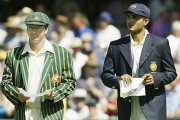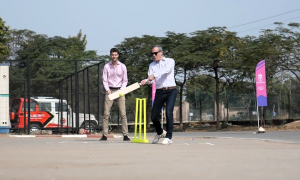The umpire decision is seen as optional and so ineffective since people can see on screens and judge whether the player is out or not out. It fuels anger among crowd and cricket followers around the globe. And now winning the matches has become crucial for teams because they carry the burden of expectations of followers. It is important that we have a foolproof review system which must be accompanied by good technology. Although the issue of human factor is there, but now-a-days the stakes are high in the game of cricket, best example is the survival of Sachin in World cup semi in UDRS.
The Decision Review System (DRS) is likely to be part of international cricket. The International Cricket Council in a statement said that the UDRS, which was recommended by the Cricket Committee for mandatory use in all forms of cricket, will come into affect if it is passed by the Executive Board on June 29. The ICC has said the usage of the DRS in Tests, ODIs and T20 games has got unanimous approval from its Cricket Committee, of which former Indian captain Ravi Shastri is a member. Earlier on Monday, the ICC’s chief executives’ committee recommended a modified version of the Decision Review System (DRS), which has been accepted by the Board of Control for Cricket in India (BCCI).
However, the use of the Hawk-Eye ball tracking technology has been kept out of the purview of mandatory use of DRS, which will now become a part of all Tests and ODIs. The use of Hot Spot (infra red cameras) and Snickometer will be compulsory. BCCI is also ready to accept UDRS if technology in decision-making will include infra-red cameras i.e. Hotspot and audio-tracking devices i.e. Snickometer.
The Umpire Decision Review System (abbreviated as UDRS or DRS) is a new technology based system currently being used on an experimental basis in the sport of cricket. The system was first introduced in Test Cricket for the sole purpose of reviewing the controversial decisions made by the on-field umpires in the case of a batsman being dismissed or not. The new review system was officially launched by International Cricket Council on 24 November 2009 during the first Test match between New Zealand and Pakistan at the University Oval in Dunedin. It was first used in One Day Internationals in January 2011, during England’s tour of Australia. Recently, the ICC has made the UDRS mandatory in all international matches.
There are a few more major changes that can be expected with the ICC tweaking quite a few rules.
– The process of using runners by injured batsmen may be abolished. The usage of runners has existed since a century in cricket and has often led to disagreements between the two opposing teams.
– In a bid to revamp ODI cricket, new balls will be used from each end. As per existing rules, the ball is changed after the 34th over as it loses its shine.
– The powerplay periods may also be regulated. The batting powerplay is generally taken in the death overs while the bowling powerplay is usually taken in the 11th to 15th over period, which beats the purpose of making the middle-overs more interesting.
India has not produced great umpires in international cricket. But now we have technological advancements which could lead to build a complete technology for decision review system. We could produce an alternative to Hawk eye, Hot spot and snickometer. A great opportunity to bring our own system to get recognized at world stage.
Tags: BCCI, Cricket, DRS, Hot Spot, ICC, Snickometer, Technology, UDRS, Umpire Decision Review System












